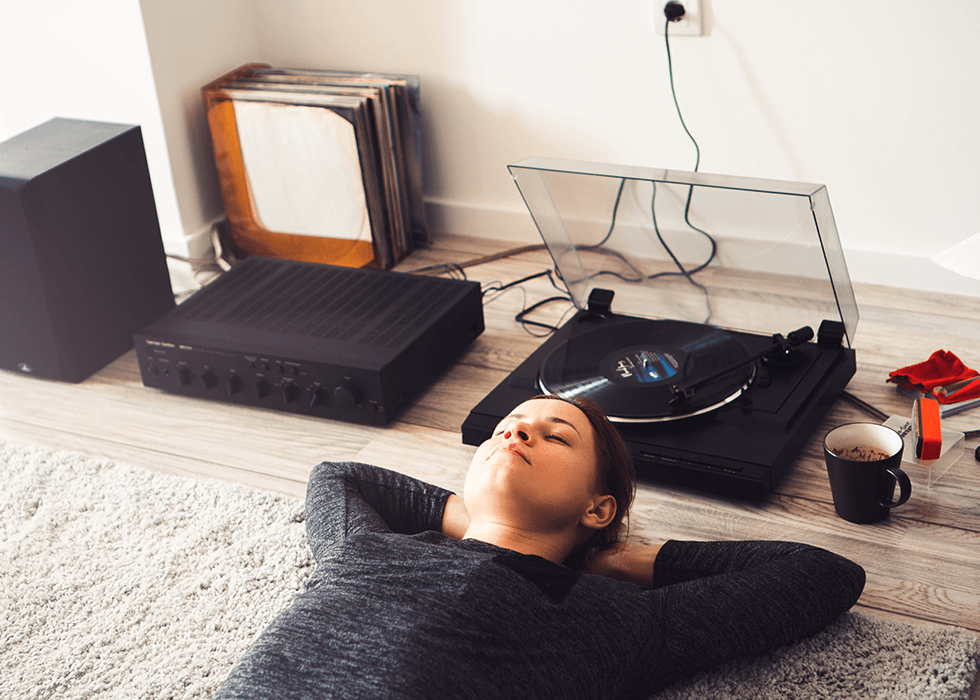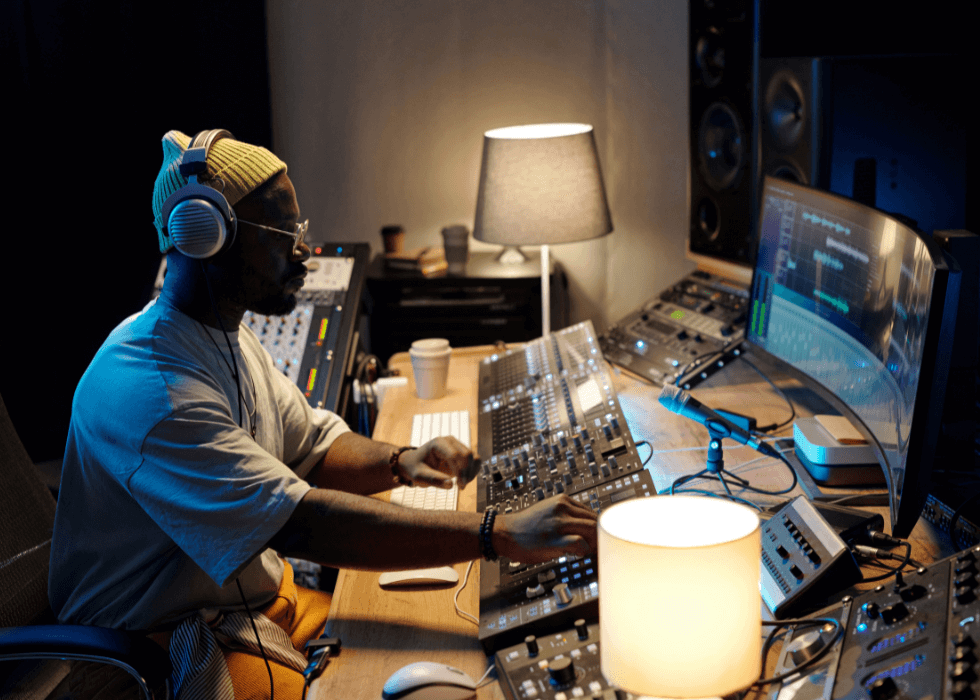
Guide to HiFi: What is High Fidelity Audio?
Not all sound is created equal, and that’s where high fidelity (HiFi) stands apart. By capturing the richness and depth of original recordings with minimal distortion, HiFi delivers an immersive, near-live experience across music, film, games, and more.
Once limited to specialized analog gear, HiFi is now built into everything from smartphones to studio equipment, making it a favorite of audiophiles, sound engineers, and everyday listeners. To understand why HiFi continues to lead in sound quality, it is helpful to examine its technical principles and innovations.
What Does HiFi Mean?
HiFi preserves the original recording’s integrity, minimizing distortion, maintaining an even frequency response, and achieving a dynamic range that reveals subtle nuances. These attributes ensure the recording’s playback reflects what the artist and engineer intended for the listener to experience. Conventional consumer audio systems, in contrast, sacrifice fidelity for convenience, producing a compressed sound with limited frequency coverage and distortion at elevated volumes.
Many of today’s HiFi systems go well beyond basic playback, using tools like AI-assisted calibration, room correction, and personalized listening profiles to deliver precise and transparent sound. Several key attributes lie at the core of this elevated listening experience that define high-fidelity performance:
- Frequency Response: The ability of a system to reproduce audio evenly across the audible spectrum (typically 20 Hz to 20,000 Hz). A flat response ensures no part of the sound—bass, midrange, or treble—is overly emphasized or diminished.
- Total Harmonic Distortion (THD): A measure of unwanted harmonic artifacts introduced during playback—values below 0.1% indicate highly accurate sound reproduction.
- Dynamic Range: The difference between the quietest and loudest sounds a system can accurately reproduce. A wider dynamic range enables more expressive and detailed playback, preserving the emotional impact of a recording.
Together, these elements create an immersive listening experience that surpasses the capabilities of standard sound systems.
Benefits of HiFi Audio
High-fidelity audio's precision in capturing clarity, depth, and imaging leads to a richer, more engaging soundscape. HiFi systems allow individual instruments and voices to stand out distinctly within a mix, leading to listener benefits that include:
- Enhanced Clarity: Fine details in the audio are preserved, allowing every element to be heard with precision.
- Improved Depth and Imaging: Spatial cues become perceptible, creating a lifelike, three-dimensional soundstage.
- Minimal Distortion: High-end components reduce unwanted interference, even during complex or high-volume playback.
- Greater Emotional Connection: Accurate tonal reproduction and timing bring out the emotional intent of the performance.
- Fatigue-Free Listening: Smooth, balanced sound profiles minimize ear strain, enabling longer, more enjoyable sessions.

Wide Applications
From casual environments to professional studios, the multitude of benefits of HiFi audio extend across diverse listening contexts:
- Casual Listening: HiFi systems enrich music, film, and gaming experiences by delivering realistic sound depth and presence.
- Professional Settings: Accurate reproduction is indispensable for mastering, mixing, and critical sound evaluations.
- Skill Development: Exposure to high-quality audio sharpens auditory discernment and nurtures a deeper appreciation of sonic detail over time.
- Automotive Environments: Advanced in-car HiFi systems, such as Tesla’s Ultra High Fidelity setup, transform the daily commute into a concert-like experience with enveloping acoustics and dynamic range.
- Audiophile Enjoyment: Enthusiasts who invest in premium gear and lossless audio formats experience unmatched clarity, soundstage, and emotion, often describing it as rediscovering familiar music.
- Home Theater Systems: HiFi audio elevates the cinematic experience at home, enabling users to hear every whisper, explosion, and orchestral cue as intended by filmmakers.
- Virtual and Augmented Reality: In immersive media, spatial HiFi audio enhances realism, enabling precise directional cues and creating a sense of presence crucial to more immersive VR/AR experiences.
- Wellness and Meditation: High-quality sound systems used in therapeutic sound baths or mindfulness apps provide cleaner tones and fuller resonance, deepening relaxation and mental clarity.
Whether at home, on the road, or in the studio, high fidelity audio continues to elevate how listeners enjoy and engage with sound.
Applications of HiFi Across Industries
Advancements in technology, combined with consumer demand, have broadened the reach of HiFi audio into various domains, including personal audio, professional production, live broadcasts, and automotive sound environments.
Consumer-Grade Audio Systems
Audiophile-grade amplifiers, digital-to-analog converters (DACs) that turn digital music files into analog signals for speakers, and carefully engineered speakers and headphones allow listeners to experience music as the artist intended in their homes.
From the soaring crescendo of a symphony to the subtle strum of an acoustic guitar, HiFi captures every texture and tone with stunning accuracy. HiFi streaming devices and integrated amplifiers combine digital and analog excellence in compact, stylish form factors, further lowering the barrier to entry.
Professional Audio Environments
Studios rely on high-fidelity monitors to detect subtle flaws and refine recordings, while live venues need balanced, distortion-free sound at high volumes. Broadcast and post-production teams depend on precise audio to ensure seamless synchronization with visual content.
Technologies like Audio over IP (AoIP) are increasingly used to support these high-resolution workflows. In each case, HiFi helps preserve the artistic and technical integrity of the final product, enabling professionals to trust what they hear and make critical decisions with confidence.
Automotive Sound Systems
The automotive industry is advancing HiFi with systems designed for the unique acoustics of vehicle interiors. Tesla’s Ultra High Fidelity system features up to 22 strategically placed speakers, powerful subwoofers, and digital signal processing tailored to the cabin, creating an immersive, studio-like experience. It delivers tonal balance and spatial clarity at any speed, even with road noise.
Automakers like Volvo, Mercedes-Benz, and BMW partner with renowned audio specialists to offer similarly premium in-car sound that simulates the feel of a concert hall or mastering suite.
Challenges with Achieving HiFi
Despite its appeal, achieving true high fidelity audio involves overcoming key obstacles that include:
- High Equipment Costs: Quality components of HiFi demand a significant investment.
- Space Requirements: Proper speaker placement and acoustic treatment are crucial, often limited by room constraints.
- Technical Complexity: System setup and calibration require expertise beyond the capabilities of casual users.
- Marketing Ambiguity: The term “HiFi” is often loosely applied, obscuring genuine product performance.
- Streaming Compression: Lossy formats common on many platforms compromise fidelity unless lossless options are selected.
Acoustic treatment, isolation from external noise, and balanced electrical systems can also impact the listening experience. Achieving true HiFi requires more than just high-quality gear; it also requires high-quality context. Continued advancements in AI-driven calibration, streamlined wireless standards, and accessible software aim to alleviate many of these barriers.
The Future of HiFi Audio
The future of HiFi lies in innovations that push the boundaries of immersive sound, making high-fidelity audio more personalized and accessible than ever through emerging trends such as:
- Lossless Streaming Platforms: Services like Apple Music, Tidal, Amazon Music HD, and Qobuz deliver high-resolution audio to wider audiences.
- Wireless HiFi Protocols: Standards such as LDAC and aptX HD enhance wireless fidelity by reducing latency and preserving audio detail.
- AI-Enabled Room Calibration: Solutions like Dirac Live and Sonos Trueplay use environmental data to optimize playback in real-time.
- Customized Listening Profiles: Systems now incorporate individualized hearing assessments to tailor sound reproduction to each user's unique needs.
These innovations are transforming static HiFi systems into intelligent, context-aware audio experiences that adapt seamlessly to environmental and listener preferences.
FAQ
Here are a few commonly asked questions about HiFi:
Q: What Is Ultra High Fidelity?
A: Although not a formal audio industry term, “Ultra High Fidelity” has gained prominence through Tesla’s marketing of its premium in-car audio systems. This concept emphasizes extensive speaker arrays for enveloping sound, sophisticated digital signal processing optimized for cabin acoustics, and amplifiers and subwoofers engineered for dynamic performance. The approach focuses on the challenges presented within automotive environments, such as managing cabin acoustics, minimizing road noise, and delivering consistent sound quality across varying seating positions.
Q: What Makes HiFi Better Than Standard Audio?
A: Factors that distinguish HiFi include support for lossless compression, which preserves the complete audio signal without data loss; extended frequency response, enabling accurate reproduction of deeper lows, crisper highs, and nuanced mids; and minimal distortion, where high-quality components minimize interference and artifacts. These attributes culminate in an audio experience that is more transparent, detailed, and emotionally engaging.
Q: Can Anyone Notice the Difference in HiFi?
A: While auditory sensitivity varies individually, many listeners can detect improvements in sound quality in the right conditions. Trained or experienced listeners can typically discern differences more readily, while general audiences often develop a growing appreciation for enhanced detail and soundstage over time.
HiFi Audio: The Takeaway
High-fidelity audio continues to set the gold standard for sound reproduction, delivering clarity, realism, and emotional depth that elevate the listening experience across various industries, including automotive design, entertainment production, and home and personal audio. As HiFi technology becomes more advanced and accessible, the need for a deeper understanding will increase.
AVIXA offers audio professionals and enthusiasts meaningful ways to stay ahead of the curve. Events like Integrated Systems Europe (ISE) and InfoComm provide hands-on exposure to next-generation HiFi systems, while resources such as Audio Power Hour: What’s Next? deliver expert insights into the trends shaping the future of sound. Whether you’re seeking to refine your technical skills or explore new career paths, AVIXA’s learning experiences help turn passion for audio into professional growth.
Photo credit: Getty Images/Georgijevic









